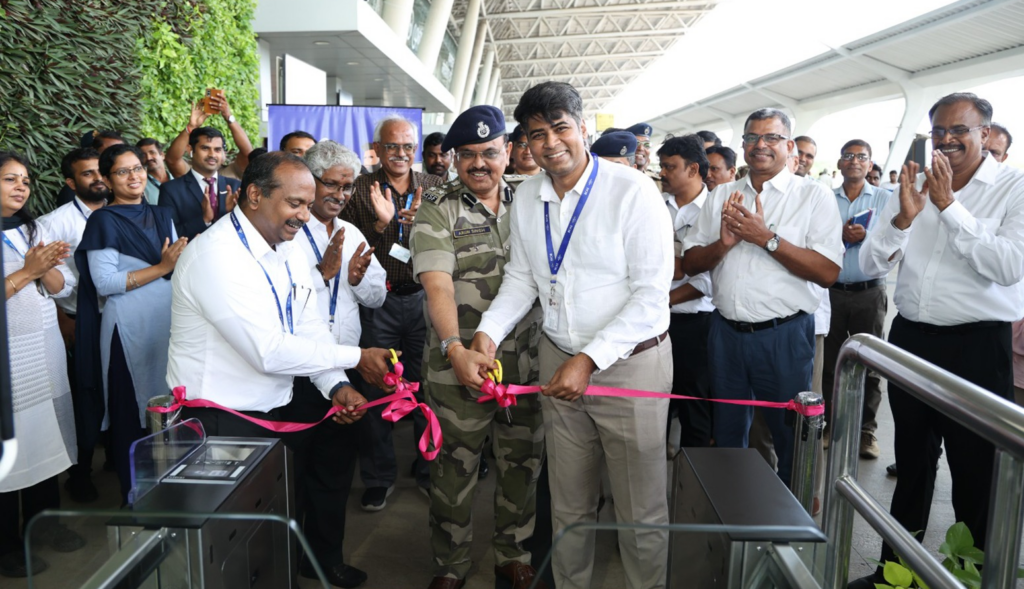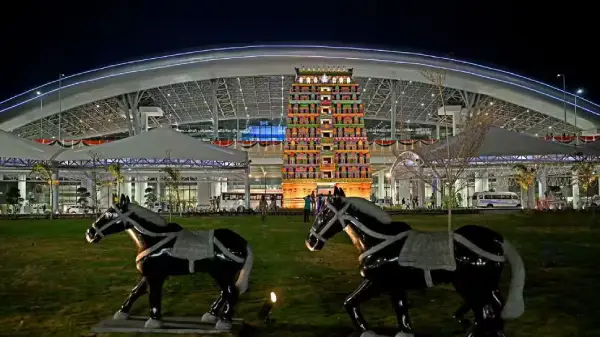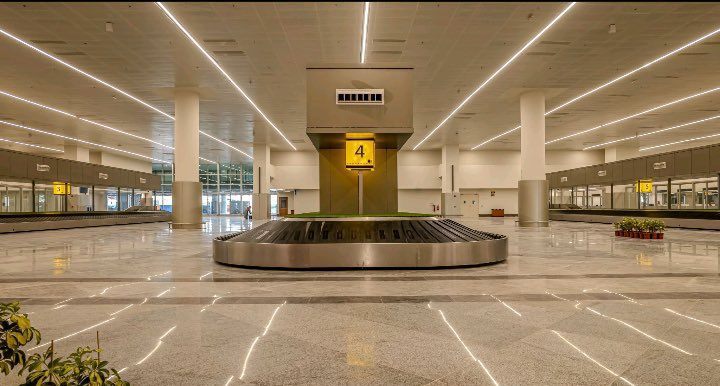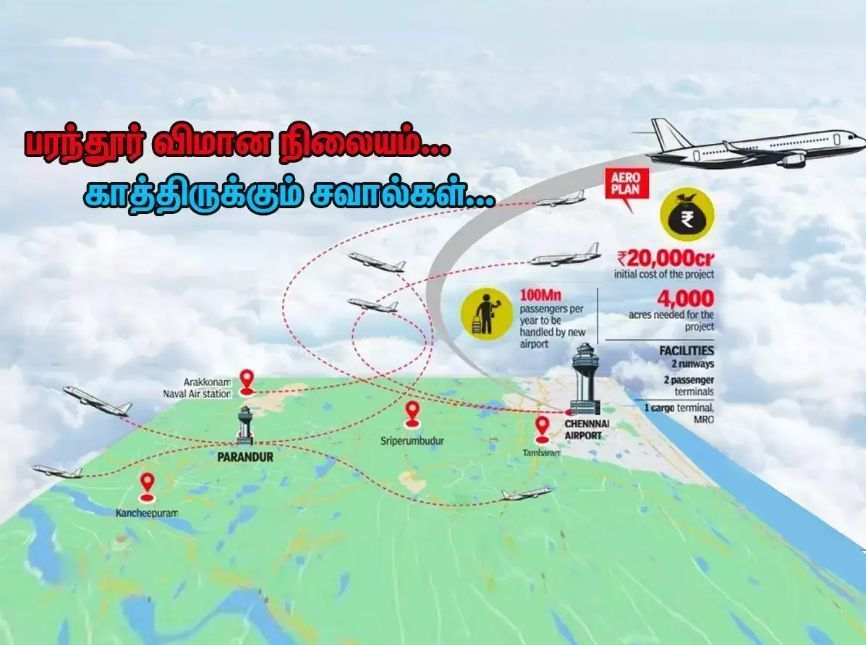Digi Yatra facility launched at Chennai airport
Chennai Airport embraces the future of travel with the launch of the Digi Yatra facility on June 7th, 2024. This innovative system promises a smoother, contactless experience for domestic passengers, leveraging facial recognition technology (FRT) to streamline the travel process.
What is Digi Yatra?
Digi Yatra is a government-backed initiative aimed at revolutionizing air travel in India. It utilizes facial recognition technology to eliminate the need for physical documents at various checkpoints within the airport. Passengers register beforehand, linking their facial images with their boarding pass and identity documents. Upon arrival at the airport, facial recognition cameras verify their identity, allowing them to breeze through security checks and boarding gates without needing to present physical documents.

Benefits for Passengers
The Digi Yatra system offers a multitude of advantages for passengers travelling through Chennai Airport’s domestic terminals (1 and 4). Here’s a glimpse of what passengers can expect:
- Reduced Queues: Imagine skipping long queues for security checks and boarding. Digi Yatra promises faster processing times, allowing passengers to relax and spend less time waiting.
- Contactless Convenience: In the age of hygiene awareness, Digi Yatra eliminates the need to fumble with documents, offering a more hygienic travel experience.
- Seamless Flow: With facial recognition taking care of verification, passengers can navigate the airport with ease, reducing the stress and frustration often associated with traditional travel procedures.
- Improved Efficiency: Faster passenger processing leads to improved overall airport efficiency, benefiting both passengers and airlines.
How to Use Digi Yatra
Enrolling in Digi Yatra is a simple process. Passengers can register through the Digi Yatra app or the official website of the Ministry of Civil Aviation. The registration involves providing personal details, uploading a photograph, and linking your Aadhaar card (a unique national identification number) for verification. Once registered, passengers can link their upcoming flight details with their Digi Yatra profile, creating a hassle-free travel experience.
Current Implementation
While Digi Yatra is in its initial stages of deployment, Chennai Airport marks a significant milestone. Currently, the facility is available for passengers flying on specific airlines:
Terminal 1: IndiGo, SpiceJet, and Akasa
Terminal 4: Air India, Vistara, and Air India Express
The rollout is expected to expand to include other airlines and airports gradually.
Security Concerns and Privacy Measures
The use of facial recognition technology raises concerns about data privacy and security. To address these concerns, the Digi Yatra facility adheres to strict regulations. Facial images are stored in a secure and encrypted format, and only authorized personnel have access to this data. Passengers also have the option to opt out of the program and use traditional verification methods.
The Future of Travel
The launch of Digi Yatra at Chennai Airport signifies a significant step towards a more efficient and passenger-centric future for air travel in India. As the technology matures and expands, we can expect to see seamless travel experiences not just domestically, but on international journeys as well. This innovation holds the potential to transform the way we travel, making it faster, more convenient, and secure.
Beyond the Launch
While the launch of Digi Yatra is a positive development, there are aspects to consider for its successful long-term implementation:
- Public Awareness: Educating passengers about the benefits and registration process is crucial for wider adoption.
- Inclusivity: The system should cater to individuals who may not be comfortable with facial recognition or lack access to smartphones for registration.
- Accessibility: Ensuring a smooth experience for passengers with disabilities is essential for an inclusive travel environment.
Conclusion
The Digi Yatra facility at Chennai Airport marks a promising step towards a future of smarter and more efficient air travel. With its focus on speed, convenience, and security, this technology has the potential to revolutionize the passenger experience. As the system continues to evolve and expand, we can look forward to a more seamless and enjoyable travel journey.
FAQs
How do I use Digi Yatra at the airport?
Once registered, link your upcoming flight details with your Digi Yatra profile through the app or website. Upon arrival at the airport, approach the designated Digi Yatra lanes at security checks and boarding gates. Facial recognition cameras will verify your identity, allowing you to proceed without needing to show physical documents.
Is Digi Yatra safe?
Facial images are stored securely and encrypted. Only authorized personnel have access to this data. Passengers also have the option to opt out of the program.
What if I don’t want to use Digi Yatra?
You can still travel through the airport using traditional methods. Security check lanes and boarding gates will continue to cater to passengers who prefer not to use Digi Yatra.
What happens if the facial recognition system fails?
In case of technical issues, alternate verification methods will be available at the checkpoints.
Who can benefit from Digi Yatra?
Frequent flyers and passengers who value a quick and convenient travel experience will find Digi Yatra particularly advantageous.
Will Digi Yatra work for international travel?
Currently, Digi Yatra is functional for domestic flights only. The system might expand to include international travel in the future.
I have a disability. Can I still use Digi Yatra?
The system is designed to be inclusive. If you encounter any accessibility issues, airport staff will be available to assist you.





